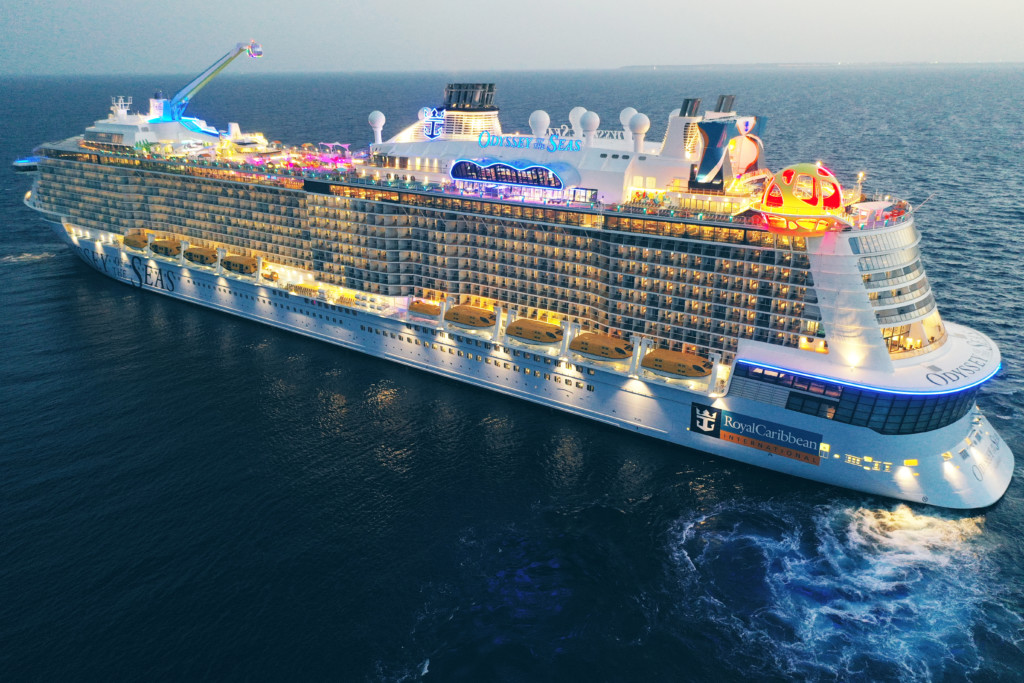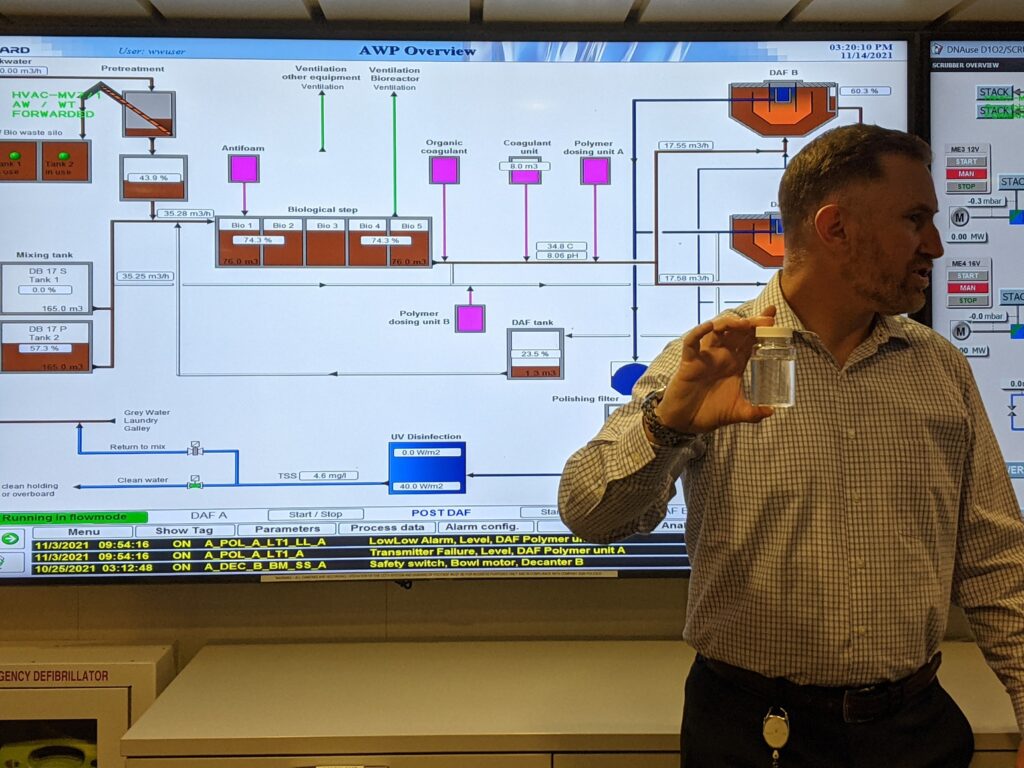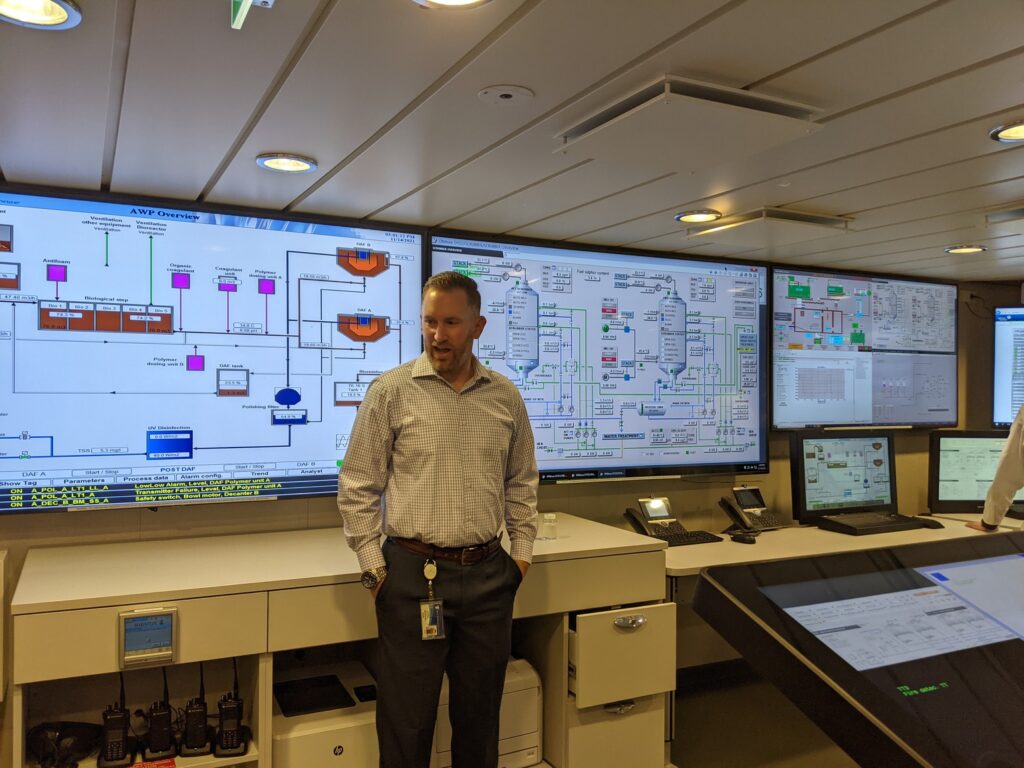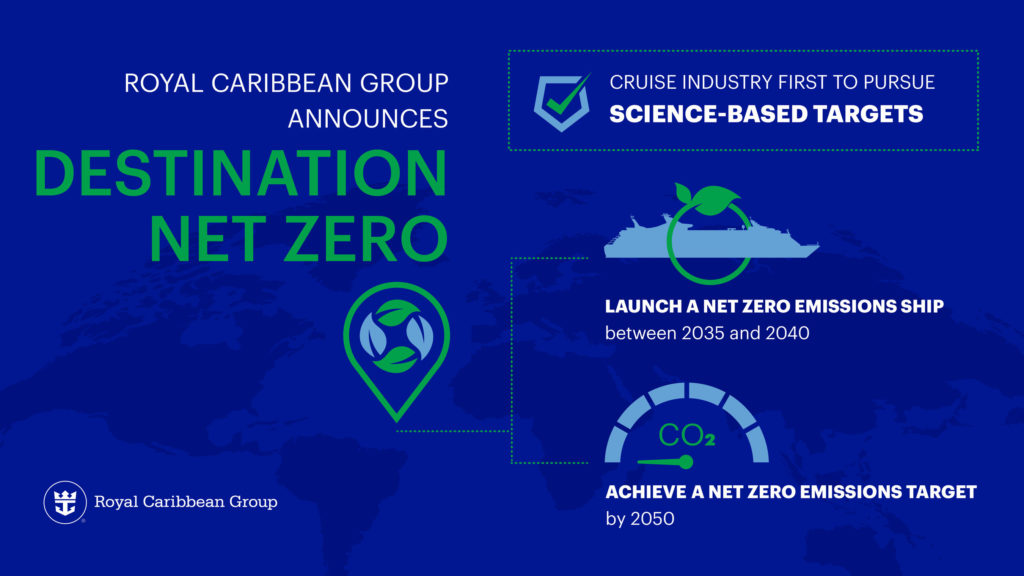The cruise industry makes up a substantial section of the travel industry. Before the pandemic, Statista reports cruise passengers totaling almost 30 million in 2019. While Covid-related impacts have continued to hit the cruise industry hard two years into the pandemic, new studies show that travelers are once again ready to cruise. Cruise giant Royal Caribbean, a leading cruise line with 25 ships in operation, is one of a number of cruise lines working to lessen its fleet’s environmental impact through an initiative it refers to as “Seastainability.”

Ingrained Environmental Compliance Operations
Citing the oceans’ critical role in business operations, Royal Caribbean Group says keeping the oceans protected has become a huge part of the company’s sustainability program. Known as the “Save the Waves” campaign,part of Royal Caribbean’s approach since 1992, operations and protocols have been analyzed to ensure the company’s goal of reducing its environmental impact is being met. Following the reduce, reuse and recycle motto, other major components of the program include wastewater purification, single-use plastic reduction, energy reduction and emissions purification.
An Environmental Officer onboard each Royal Caribbean ship is responsible for guaranteeing all environmental compliance protocols are being met, with all crew members is responsible for reporting to them in some capacity. In addition, third-party companies are employed on a quarterly basis to test and ensure that an unbiased sustainability report is documented for each ship in operation.
Water Creation & Advanced Wastewater Purification System

Water conservation and wastewater purification are among the “Save the Waves” initiative’s highest priorities. Some destinations Royal Caribbean Group ships sail to are actually water scarce. Therefore, each ship is equipped to churn out more than 90% of the water used onboard through a process of either steam evaporation or reverse osmosis. To ensure guests don’t feel slighted with things like water pressure in the shower, Royal Caribbean ships use aeration through sink faucets and shower heads. “We use air to create pressure rather than forcing water out at high volumes,” explains Nick Rose, Royal Caribbean’s director of Environmental Programs in a statement. “It lets our guests shower comfortably while saving water. It’s a total win-win.”
Royal Caribbean Group takes precautions with all grey and blackwater as well by ensuring each vessel in operation has its own advanced wastewater purification onboard. Most ships are outfitted with a two- to three-step process, but onboard the Odyssey of the Seas, the advanced wastewater purification system consists of five steps. “The reason for five is to meet the Baltic Standard for nitrogen and phosphorus removal,” said Rose in a behind the scenes tour of the Engine Room onboard Odyssey of the Seas in November 2021. Rose went on to show a vial of the purified water — water that has been so cleansed that it is actually drinkable and exceeds regulation for many cities within the United States. This water is discharged at least three nautical miles away from land in accordance with international law.
Reducing Landfill Waste

Over the last two years Royal Caribbean Group has been working to remove single-use plastics onboard each of its ships. While they have succeeded in reducing 60% of this material, Rose hinted at the company’s new program to completely eliminate single-use plastics over the course of the next few months. The reasoning behind it not being an immediate halt is the need to use up products that were pre-purchased. This is the next step towards the company achieving zero-waste status. Royal Caribbean ships are currently operating on a circular economy of recycling, reusing and refashioning waste to energy with half a pound of waste per day per passenger needing to be sent to landfills.
Energy Management
Also located in the Engine Room onboard the Odyssey of the Seas is the monitoring for the Advanced Emissions Purification (AEP) system — or “Scrubbers”. These huge scrubbers are contained in the funnels onboard the ship and remove the sulfur component from its emissions. These dual-hybrid systems are connected to the four diesel engines onboard and remove 98% of sulfur dioxides. It is Royal Caribbean Group’s goal to further reduce emissions by 25% by 2025.
But what if cruise ships didn’t even have to use their engines — at least while in port? Shore power is growing in popularity as a sustainable alternative worldwide. The basis of the operation is that a large plug is hooked up to the cruise ship to allow the ship to still have power while the engines are off — reducing emissions while at port. Unfortunately, there are only ten ports in the United States that are equipped to use shore power according to the United States Environmental Protection Agency. However California has passed legislation for all ports with ocean-going vessels at berth in an effort to reduce emissions. This new requirement, which goes into effect January 1, 2023, will require all ports to have shore power and ships docked to use the shore power hookups.
Project Evolution and Destination Net Zero
Royal Caribbean Group is continuing to enhance its current fleet while also developing innovative ways for their new ships to create power. This new class of cruise ships set to debut in 2023 is known as Project Evolution and will utilize three different power sources including using liquefied natural gas (LNG) in its dual fuel engines. This a major step towards the company’s ultimate target, “Destination Net Zero,” a plan to achieve zero net emissions by 2050.

Destination Net Zero takes a four-pronged approach that includes:
- Modernization of fleet through the introduction of 13 new energy-efficient and alternatively fueled vessels, including Project Evolution.
- Continued investment in energy efficiency programs for its fleet, including energy saving technologies, enhanced data systems and digitalization.
- Development of alternative fuel and alternative power solutions.
- Optimized deployment and integration of strategic shore-based supply chains.
“Royal Caribbean Group has a history of innovating in every aspect and level of the company,” said William K. Reilly, chairman, Royal Caribbean Group’s board of directors’ safety, environment, and health committee, in a press release. “This is another important step on the serious and ambitious path to preserve the health and allure of the sea and the beauty of the oceans.”
More from Better:
- Everything You Need To Know For Ski Season 2022
- 11 U.S. Companies That Excel at Corporate Social Responsibility in 2022
- Innovative Online Market Helps Feed Families During the Pandemic — Organizer Is Honored by United Airlines With a Red Cross Essential Services Hero Award

Lauren Bowman is a travel enthusiast, book lover, and minimalist based in Georgia. She loves experiencing new cultures, trying new foods, lending libraries, and learning about the world around her. Follow her on Instagram/Twitter @lbowmantravels.

